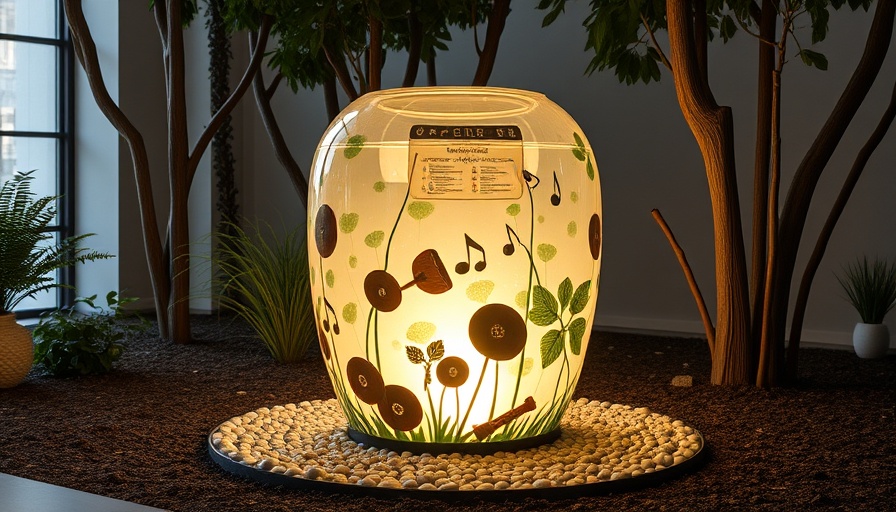
The Intersection of Design and Ergonomics in Student Projects
The Instituto Tecnológico y de Estudios Superiores de Monterrey has recently showcased brilliant student designs that blur the lines between creativity and practicality. One standout project features a musical water container, illustrating the students' innovative approach to problem-solving and design. This project not only highlights innovative thinking but also emphasizes the importance of ergonomic principles in everyday objects, especially for digital nomads seeking comfort and efficiency in their workspaces.
Innovative Designs for Modern Workspaces
As more professionals embrace remote work, the significance of functional and ergonomic designs has surged. The musical water container represents a whimsical yet practical creation that can enhance the work experience for digital nomads. By integrating hydration with an auditory experience, it encourages frequent water consumption, crucial for maintaining health and productivity during long work hours. Ergonomic principles dictate that objects should not only serve their purpose but do so in a way that promotes comfort and wellness.
Benefits of Musical Water Containers: More than Just Fun
While the novelty of a musical water container may initially attract attention, its benefits are substantial. First, we examine hydration—an essential aspect of health. Adequate water intake is vital for cognitive function, memory, and overall well-being, particularly for those engaged in demanding mental tasks. The addition of music can create a more enjoyable and encouraging atmosphere, motivating users to drink more water and stay hydrated.
Cultural Impact: Technology Meets Artistry
The projects from the Instituto Tecnológico y de Estudios Superiores de Monterrey reflect a growing trend where technology intersects with artistry. In a world where digital nomads often experience isolation, creations like the musical water container serve as reminders of the combination of function and design that enhance daily life. As remote work continues to evolve, these designs promote self-care and creativity, crucial elements for successful remote work environments.
Future Trends: Design with Purpose
Looking ahead, we can anticipate a rise in projects like the musical water container that prioritize both fun and functional design. As digital nomads navigate their unique challenges, the demand for products that support mental wellness without sacrificing aesthetic appeal will only increase. Ergonomic designs that cater to comfort, health, and productivity will define the future of workspace tools, from furniture to everyday gadgets.
Your Space, Your Design: Creating an Inspiring Workspace
If you're a digital nomad overwhelmed by the clutter and monotony of remote work, consider implementing creative and ergonomic tools like the musical water container. Such designs not only elevate workspace appeal but also serve functional roles to enhance productivity and health. Little adjustments in your workspace can drastically improve your overall work experience and well-being. Embrace innovation—after all, the tools in your workspace can be as exciting as the work you do!
If you're intrigued by the balance of artistry and functionality within everyday products, embrace new innovative designs and consider how you can incorporate ergonomic principles into your work life. The future of remote work lies in effective and joyful designs that meet our needs while also inspiring us!
 Add Row
Add Row  Add
Add 




Write A Comment